Do California ag counties hold solutions to Monterey County farmworker housing crisis?
This story was produced as a project for the 2020 California Fellowship.
Other stories in this series include:
Ag workers exempted from COVID-19 shelter in place mandate, advocates fear for health
Protected in the fields but not at home: Salinas H-2A farmworkers at risk
‘The perfect storm of vulnerability’: Protection in the fields doesn’t follow farmworkers home
Trump plans to halt immigration, California growers aren't thrilled
Monterey County ag workers comprise nearly a quarter of county COVID-19 diagnoses
Sixth person dies from COVID-19, Alisal and North Salinas hardest-hit in county
Monterey County growers face 'unprecedented losses' amid pandemic
Close quarters: Overcrowding fuels spread of COVID-19 among essential and service workers
Evicted Monterey County renters face greater risk of contracting COVID-19
Monterey County advocates, growers urge renewed focus on farmworker housing
Housing bills aim to extend tenant, landlord protections for Californians amid pandemic
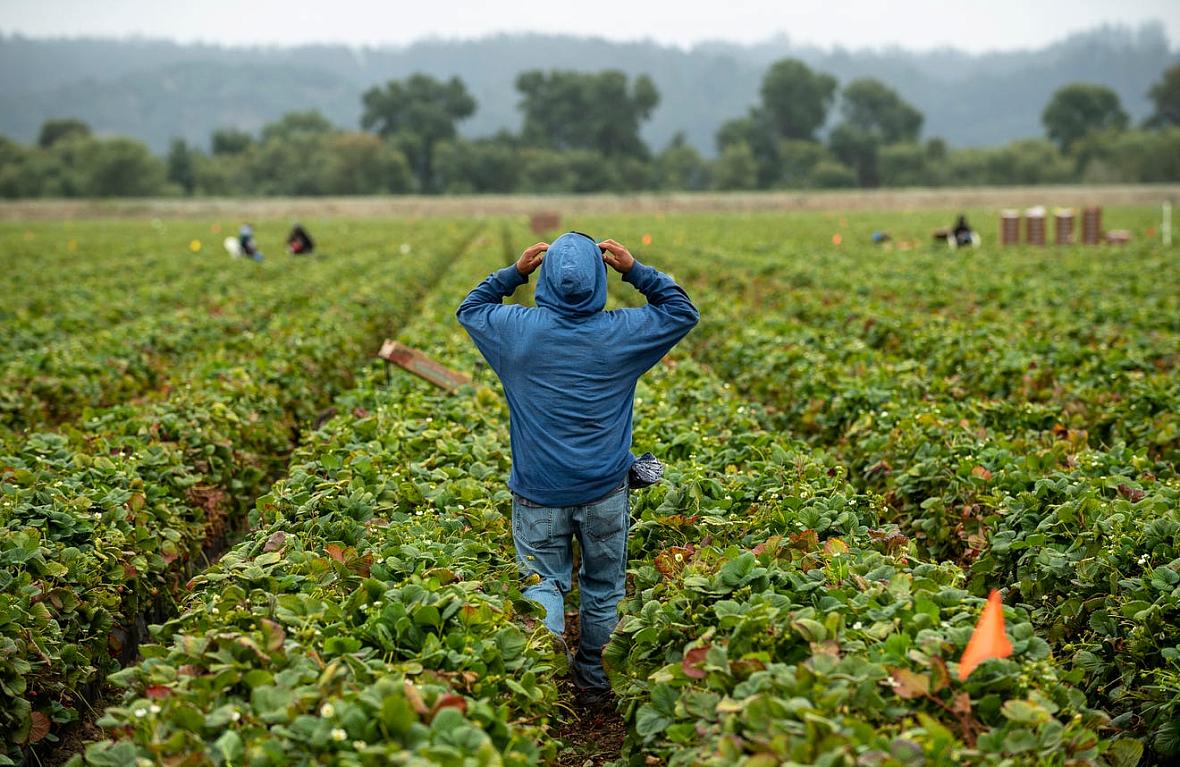
A farmworker walks between rows of strawberries as he adjusts his hoodie in Watsonville, Calif.
David Rodriguez/The Salinas Californian & Catchlight
In 2019, Monterey County sold more than five billion dollars worth of agricultural products, from cannabis to strawberries to leaf lettuce. It is, by far, the largest industry in the county.
However, that industry needs laborers on the ground. Tens of thousands of people plant, pick, and pack the produce that travels across the nation to feed residents.
According to the 2018 Salinas and Pajaro Valley Farmworker Study, more than 90,000 farmworkers live in the region, earning an average of $25,840 a year, the U.S. Bureau of Labor Statistics shows.
Salinas and Monterey County as a whole are some of the least affordable places to live in the U.S., per the 2019 Harvard State of the Nation's housing study.
A farmworker holds a box of strawberries with his left hand and a one wheel cart with his right as he walks to get another empty box in Watsonville, Calif., on Wednesday, July 29, 2020. David Rodriguez/The Salinas Californian & Catchlight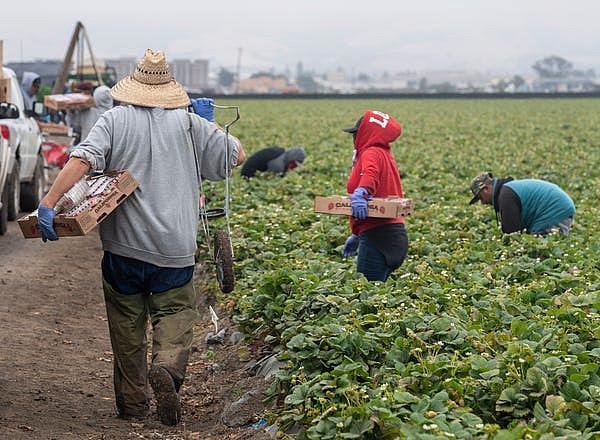
For more than a decade, journalists have chronicled the exorbitant cost of living in Salinas. While guest workers in the county on an H-2A visa can sleep four to a room in motels, domestic farmworkers often pack themselves and their families into houses and apartments. It is not unusual for two or three families to share one- or two-bedroom apartments, doubling or tripling up to keep costs low.
This overcrowding has resulted in one of the highest populations in the state of children considered homeless under the McKinney-Vento Act, and since the start of the pandemic, been pegged as a significant risk factor.
Housing advocates and agricultural industry experts alike agree: Farmworkers can't continue to live in cramped, expensive conditions. But they say local government often stands in the way.
Matt Barreras, general manager of Valley Pride, himself attempted to build farmworker housing in recent years, but was stymied by what he called a "slow and rigid process," he wrote for The Californian.
H-2A Foothill Packing workers gather in the evening for their dinner at the Budget Inn Motel on John Street, observing social distancing lines drawn on the pavement. April 13, 2020. Kate Cimini/ The Salinas Californian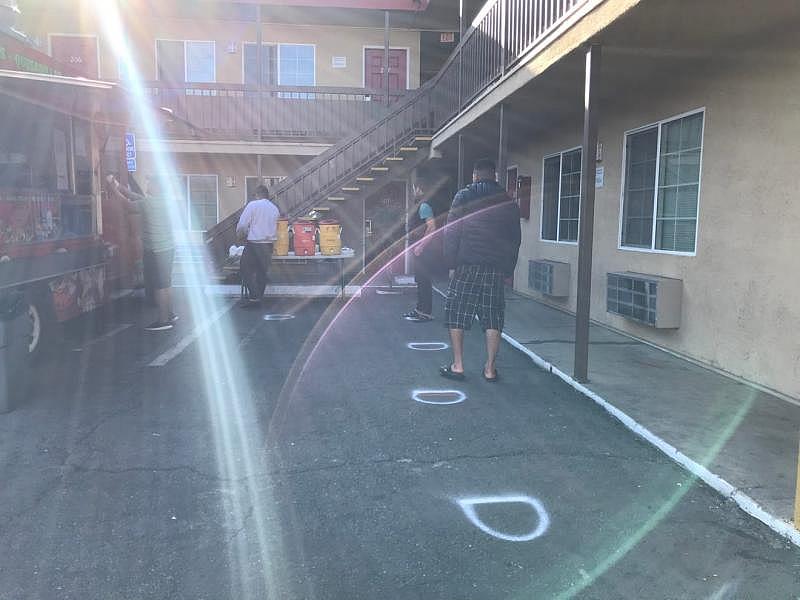
"The lack of affordable housing and subsequent or ongoing efforts to increase housing must operate...under a crisis-scenario," wrote Grower-Shipper Association President Chris Valadez.
While Monterey County has struggled with adding farmworker housing over the years, other agricultural counties across California have found ways to incentivize or clear the way for potential developers. Some have created a set of building plans for farmworker housing while others created grants for farmers renovating or adding farmworker housing to their lots.
"Farmworkers lives need to matter to local, state and national leaders – whether year-round, permanent, seasonal, migrant, temporary, H-2A, senior or retired," wrote Jennifer Coile, the retired director of the Salinas and Pajaro Valley Housing Study. "Up until now, they haven’t mattered, but COVID-19 has shown us the fragility of the food network in the US and our increasing reliance on foreign workers to plant, harvest, and process our food."
Monterey Bay Economic Partnership Housing Director Matt Huerta urged local electeds to incentivize developers to build affordable housing through methos, "such as waiving development impact fees for low-income homes and they must provide subsidies to match state and federal sources to ensure that rents can be affordable."
Here's what other areas have done about it:
San Mateo County
An H2A worker walks passed another persons room inside the Budget Inn Motel in Salinas on April 2, 2020. David Rodriguez/ The Salinas Californian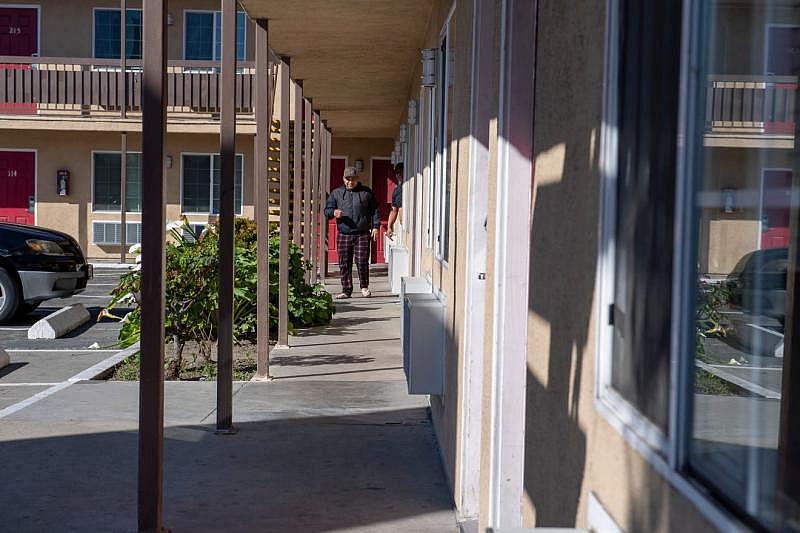
Over the past six years, San Mateo County Supervisor Don Horsley has thrown his weight behind a grant program that aims to defray the cost of building or (re-building) new or existing farmworker housing.
A county sheriff before he was elected supervisor, Horsley said he had no idea how farm laborers lived and was shocked when he found out.
"I started going around to all our different farms," Horsley said. "In some, they had good housing and in others it was abysmal. I was surprised and appalled, frankly. That became, 'well, what can we do?'"
Horsley recalled that when he first examined the state's building standards for farmworker housing he told his staff that "we couldn’t put people in jail with these standards."
A survey showed there were only about 250 units for farm laborers and about 1,400 farmworkers living in the county. Clearly, Horsley said, there was a serious need for housing.
Among the challenges San Mateo faced were the age and type of facilities already in existence for farmworkers. They were old and build for migrant laborers, Horsley said, but today, the majority of farmworkers in San Mateo County live there year-round and work for row-crop growers.
Horsely and his staff came up with an idea to furnish a loan to growers interested in refurbishing existing or building brand-new farm laborer housing, similar to a Housing and Urban Development Grant.
Domestic farmworkers pick and pack cauliflower. Oct.14, 2019. Kate Cimini/ The Salinas Californian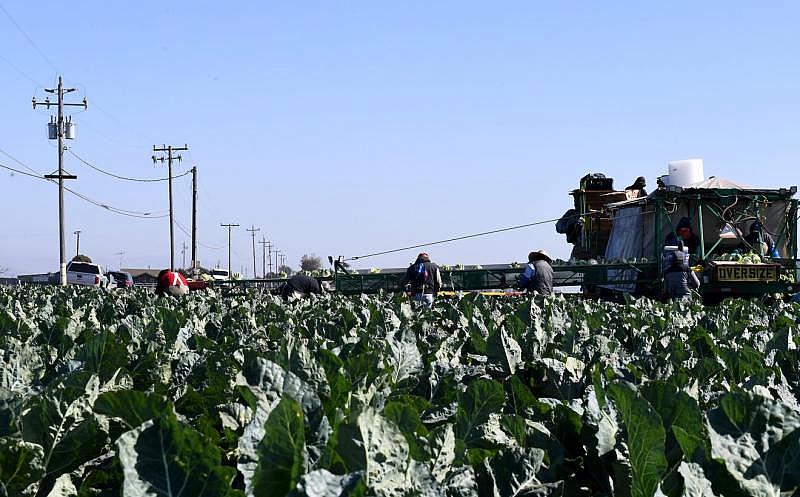
Under the county's farmworker housing program, San Mateo County will pay up to $100,000 to replace a unit, and forgives the loan interest-free over a period of time, as long as the grower agrees to charge farmworkers nothing when they are not working, and only $3 a day when they are working.
If growers want to build a brand new farmworker housing unit, they are eligible for a loan of up to $150,000, Horsley said.
After 10 years, the loan is forgiven. However, an interest rate of 3% on the loan kicks in if growers charge farmworkers more than the county-sanctioned rate.
"We knew that the farmers and ranchers didn’t have a lot of funds and couldn’t afford to replace their farm laborer housing...due to a lack of infrastructure," he said. "Doing this kept our farm laborer community housed and kept them in the area."
The county also worked with organizations like MidPen Housing, which helped develop Moon Gate Plaza apartments in downtown Salinas. MidPen and San Mateo County collaborated on Moonridge apartments, a low-income housing development in Half Moon Bay that farm laborers could take advantage of.
A farmworker wearing a face mask picks raspberries in Watsonville, Calif. David Rodriguez/The Salinas Californian & Catchlight
Horsley said the program's reach was greater than just the units it contributed funding to.
He pointed to Blue House Farms, which had two existing units on the property but wanted to replace them through the county's loan program.
"They replaced two on their own and we funded the two brand-new ones, so we facilitated the addition of four," said Horsley. "This allowed farmers to do a second one on their own sometimes."
So far, nine units have been built through the loan program, and an additional three units have been built that Horsley said can be attributed to the program's reach as the loans freed up funds for farmers to build those three without aid. A 10th unit is headed to the planning commission for conditional approval, he said.
Still, he is disappointed that the program has not been as successful as he believes it could be.
"It's helpful, but the potential has not been realized," Horsley said. "More can be done."
Horsley said he hoped to put up housing on public land instead of small units scattered around various ranches. That way, he said, the county could offer more wraparound services and better aid the children of farm laborers, who might be disconnected from the internet or other necessary services.
"It’s kind of tough to do when your population is scattered all over the coast," he added.
Santa Barbara County
Around 2018, Santa Barbara took steps to streamline its process for building farm employee housing, said Kim Probert, retired Santa Barbara County planning department tech.
A row of five farmworkers pick strawberries in synchrony near two others in Watsonville, Calif. All of them are wearing long sleeves to protect their skin from the elements. David Rodriguez/The Salinas Californian & Catchlight
"We're seeing a big growth in agriculture in the area, and so it was determined we needed to make it easier for the ag community to provide year-round housing," Probert said. "The Board of Supervisors came in and said 'we want to make it easier to build dwellings on agricultural zoned property.'"
To that end, Probert said the Long-Range Planning Team downzoned some of the ag housing requirements, making it possible to house nine agricultural workers where previously only four could be, for example.
However, Probert said, the county has just not had many people apply for high-density farm labor housing in the county of Santa Barbara.
Ventura County
In Ventura County, the Building and Safety Division created a template for accessory dwelling units (ADUs) that can also be used as farmworker housing units, intended to trim costs for both the county and the developer while streamlining the building process.
However, county staff says the plans have been under-utilized by the public, who may not even be aware they exist.
These plans for one-, two-, and three-bedroom units are allowed to be used as-is, even though applicants are not allowed to modify them. The plans are free for all to use and they save on printing and engineering fees, as well as a portion of the Building & Safety plan-check fees.
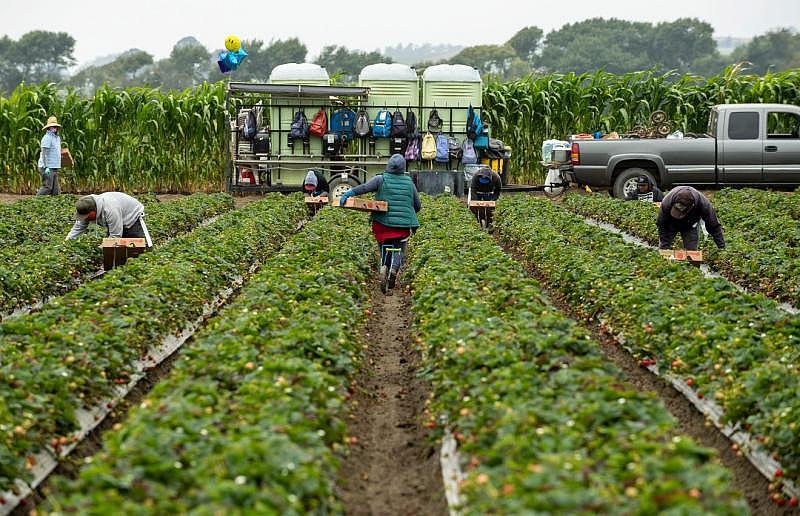
"These plans can be used both for ADUs as well as farmworker or animal caretaker dwelling units," said Ruchita Kadakia, a senior planner with the Long Range Planning Section.
Kadakia said they could even serve as group quarters, housing two farmworkers to a room, for example. She clarified units were not dormitory-style, which would put farmworkers at greater risk of catching COVID-19 from one another as well.
Still, she said, the plans have not been popular with people building farmworker housing or ADUs.
"I wish I could tell you they have been a resounding success but there has been a lack of outreach," Kadakia said.
She added that the county is currently revamping its farmworker housing regulations adjust from Ventura County's past as a primarily orchard-like agricultural hub to an area focused on specialty and irrigated crops.
Sure to be included in those new regulations will be a focus on providing more information to applicants about these pre-set plans, Kadakia said.
"We're hoping that these amendments and the public information will help people use them more."
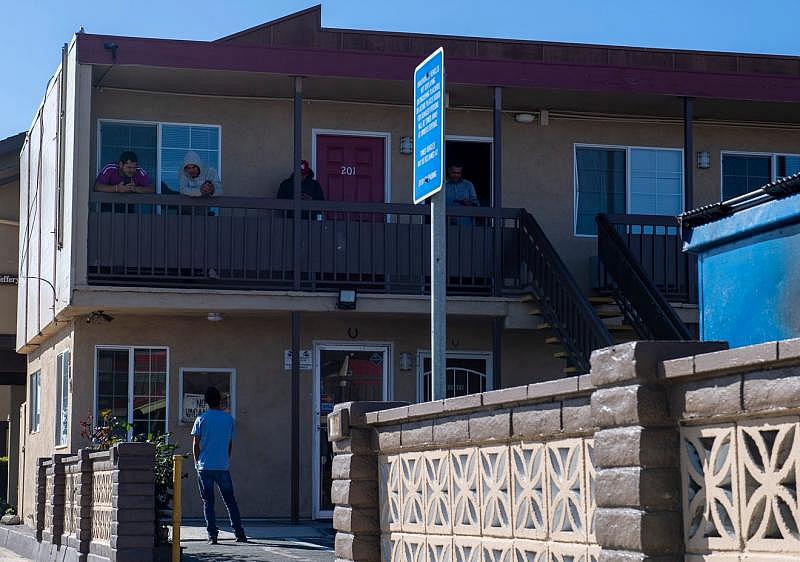
'
Kate Cimini is a journalist for The Californian and reported this story with support from the California Fellowship through the USC Annenberg Center for Health Journalism. Engagement editor Danielle Fox contributed engagement support to this story. This story idea came out of meetings with growers, advocates, and service-providers in Monterey County who served as advisors throughout the reporting process. Share your story at (831) 776-5137 or email kcimini@thecalifornian.com.Subscribeto support local journalism.
[This story was originally published by The Californian.]

